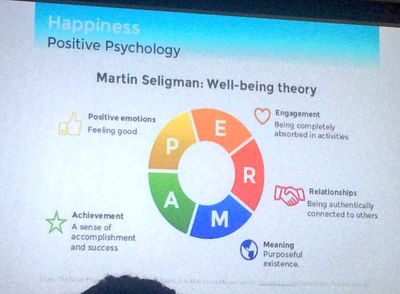Evenings at the Loft - Empathy
Dawn Ressel
Was 1 of 3 designers at Intuit to 500 devs! Needed to have them empathize with customer makes for a stronger product.
Intuit’s mission is to improve the customer’s financial experience so much “they can't go back to the old way.”
Devs can be a powerful source of innovation because “they know what's possible.” Get them to feel the customer pain!
Stage 1 of getting devs on board with customer experience—“Understand and Embrace.” Bring customer feedback to devs.
Stage 2: “Practice and build muscle.” Coach and help! No need to turn devs into UX researchers, just have them understand the customer.
Stage 3: Skill building. Helping recruit customers with advanced skills building.
Have people understand CPA pain—boxes and boxes of paperwork! How to get devs to understand it without having to be a CPA? Try analogous experiences with surveys. Sorting documents manually, even for categories we understand, really suck! (So is nagging clients!)
Doing the activity in groups means you can do debriefs after. Analogous activities need prototyping too! The CPA activity took 4-5 rounds.
Training leadership to interview customers allows all to feel customer pain, especially since they’re decision-makers. This allows execs to go beyond “if you're not coding, you're not productive.”
Workshops to build empathy design skills empowers. Setting up customer office hours (after recruiting) allows employees to chat.
Final thoughts about nurturing empathy in your company:
- Expect a wide range of reactions, including skepticism and apathy.
- Identify your champions and leverage them.
- Managing the logistics
- Tap into existing channels and operating mechanisms whenever possible
- Introduce rigor about the programs
- Get executive sponsorship
- Be patient and flexible
Joseph Lee
Empathy is the reason for design thinking and is not a soft skill.
Sci-fi shows the future we want for ourselves, but the values are of the current times.
1960s Star Trek valued intellect over emotion. Current Star Trek values emotion. Spock learns emotion now.
Emotion research started in the 1980s with Paul Ekman. We all have the same core emotions.
People studied mental illness, but now often focus on happiness.

Joseph name-drops Mazlow’s Hierarchy of Needs, and puts “internet” at the base. 😂
There are 3 basic needs for happiness: competency, autonomy, and relationships.
When we’re born, we need care from others. This doesn’t go away in adulthood, but others help fulfill.
Empathy is our “biological human interface”—what we feel in a moment of need, honed through evolution.
Empathy allows us to experience true reality, to experience something through another. When our needs are met, we are happy. When they aren’t, we are sad.
“Whether we acknowledge it or not, empathy is at the foundation of every interaction we have.”
Empathy isn’t putting yourself in other’s shoes. (“I wouldn't have voted for that guy!”) But it's “why do they feel that way?”
“It's the feeling you feel with other people.” Mirror neurons map neurons of other people, then activates yours.
“It takes nothing. We’re born this way.” Babies can mirror expressions within 20 minutes of birth.
Talent + effort = skill + effort = accomplishment. Effort will trump talent!
Bern Irizarry
Bern says that empathy is just good business, though it’s a buzzword now. But is it just a buzzword? The battle now is Corporate U.S. vs Empathy.
There’s real science in empathy, with fMRI images involving empathy and distressing images.
But there are also various definitions of empathy. Bern cites Indi Young’s work:

Most immediate and universal empathy is emotional empathy. Not replicable, but cognitive empathy (motivation) is.
The confusion between sympathy and empathy:

Brené Brown’s video of sympathy vs empathy is a great intro!
A test in Simon Baron-Cohen’s book “Zero Degrees of Empathy” showed someone’s level of EQ had nothing to do with one’s job.

What made good business throughout history:
- Community
- Scale
- Expertise
- Experience (in the present)
Empathy matters in products, teams, and life. You need to draw from people to get ideas for your solutions.

Bern says that empathy is an important part of design, and cites Jon Kolko’s book.
User research is often already limited with interviews and surveys. Open it up and do empathetic listening. Let them lead the convo—you will go places you never planned originally!
Listening means finding the patterns people talk about. “There won’t be a smoking gun.”
Good teams empathize with each other. Go from “me” to “we.”
Live empathetically and have others live it with you. Live heroically!
